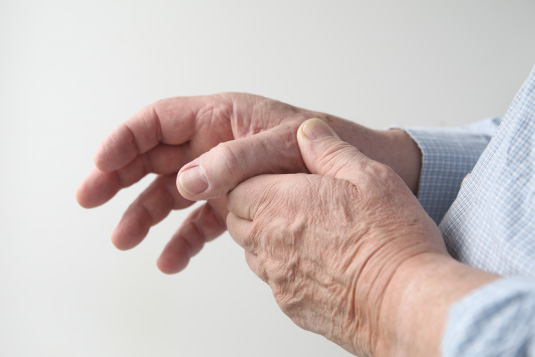

Physicians
Search

GENERAL INFORMATION
The thumb joint is the most mobile joint in the hand and is used for essentially everything we do with our hands, while also acting as a stabilizer for other fingers. This dependency on our thumbs leads to easy wear and tear that can result in joint deterioration and arthritis in patients. One of the ways to treat sufficient damage to the thumb carpometacarpal joint is through a thumb arthroplasty.
A thumb arthroplasty is a joint replacement surgery that aims to ease pain in the thumb and hand while restoring the range of motion to the thumb by removing the damaged joint and replacing it with an artificial implant. To help educate patients who may need this type of arthroplasty, we will outline a possible candidate for the procedure and what one can expect from the surgery.
When non-surgical treatments for types of arthritis, such as basilar thumb arthritis or osteoarthritis, fail to bring pain relief to the patient they may be a candidate for thumb CMC arthroplasty. A non-surgical approach to these conditions of the thumb includes medications, cortisone injections, and splinting, though because arthritis is a progressive and degenerative disease, these options may not remedy the situation in the long term.
The thumb CMC is a joint at the base of the thumb that is called the carpometacarpal joint. When a patient is developing arthritis in their thumb it causes pain, swelling, decreased strength, and range of motion due to affecting this particular joint. Other symptoms associated with arthritis in the thumb include:
If these symptoms are present, you should make an appointment with your doctor to have your thumb evaluated.
There are risk factors that have been identified for developing arthritis in the thumb, including:
Prior to surgery, your doctor will instruct you on what medications you can and cannot take and may perform some basic screening tests to ensure you’re able to go through with the procedure. The surgery can be performed as an outpatient procedure.
The surgeon will first administer general or regional anesthesia before making an incision over the thumb joint. From there they will remove part or all of your wrist and thumb bone. Using cartilage, a tendon is taken from your forearm, or an artificial implant, the surgeon will reconstruct your joint and then close the incision with stitches before bandaging it.
After the surgery has been performed and the anesthesia has worn off, you will be fitted with a splint that should not be removed. When showering or bathing, your thumb should be covered in plastic so it does not get wet. While recovering at home, your doctor may recommend that you move your fingers regularly and keep your hand elevated as much as possible for the next few weeks.
About 14 days post-operation, your surgeon will remove the stitches and your thumb will be placed in a cast and a pin. Following the cast and pin removal, you’ll receive a custom splint and begin hand therapy to regain motion. On average, strength in the thumb begins to return around 2 months after surgery and therapy.
At Proliance Puget Sound Orthopaedics, we provide best-in-class orthopedic care to our community with compassion, caring, and dedicated expertise for thumb arthroplasty. If you’re suffering from any of the symptoms listed previously or need treatment for joint pain, we encourage you to call (253) 830 – 5200 or request an appointment online to see one of our physicians.